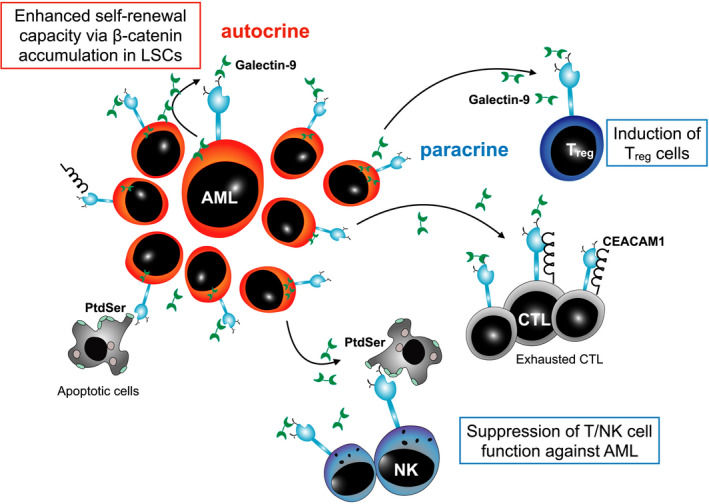FIGURE 4.

T‐cell immunoglobulin and mucin domain containing‐3 TIM‐3 signaling in human myeloid malignancies. Acute myeloid leukemia (AML) cells secrete galectin‐9 in an autocrine manner. Ligation of galectin‐9 to TIM‐3 can enhance the self‐renewal ability of TIM‐3–expressing AML/LSCs via β‐catenin accumulation. Thus, AML/leukemic stem cells (LSCs) utilize TIM‐3 signaling to propagate leukemia. Strikingly, the identical TIM‐3/galectin‐9 interaction suppressed the immune surveillance activity against AML through the induction of Treg and suppression of T/natural killer (NK) cell function. Other TIM‐3 ligands, such as phosphatidylserine (PtdSer) and carcinoembryonic antigen–related cell adhesion molecule 1 (CEACAM1), might be involved in this dual effect of TIM‐3 signaling in human myeloid malignancies
